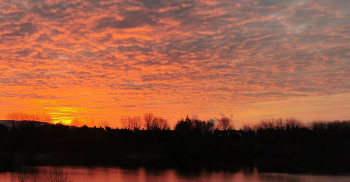
Use Landscape Photography to boost Mental Wellbeing
The morning we arrived back at London’s Gatwick airport, snow was on the ground. The UK was in the middle of ‘Lockdown III’, and my older brother and I were the last siblings to return to our lives after burying our father. It was safe to say the last thing I wanted to do was return to work. I was in no way, shape, or form ready for that reality. So, instead, I opted to hunker down, see out the lockdown and mourn the passing of both my parents, who had died within 13 months of each other. I was physically tired and mentally exhausted by grief.
Two days after returning home, I woke early to a sunrise as red as I’d ever seen. The lake in front of my house looked like someone had poured a bottle of red ink into it, the ripples fanning out in the gentle breeze. It was breathtaking. I marvelled at how the same view from my balcony could be so different on any given day.
I tried to occupy my time trying exotic new recipes, styling and photographing the dishes I made. I tried out still life photography, not able nor wanting to photograph people, I attempted to keep up my photography practice by experimenting with these new forms, trying my best to fill time as best I could with ’things’, but in every quiet second, my thoughts returned to the parents I’d lost, to what my life would be now that they were no longer around.
I was broken.
I spent days under the covers watching series after series of The Repair Shop. I used up box after box of tissues, crying silently at the stories, ones that, while ending in restoration, were ultimately filled with loss. I empathised with each family’s pain and felt they were familiar with mine.
My mental health was in tatters. This went on for a while.
Home made Tempeh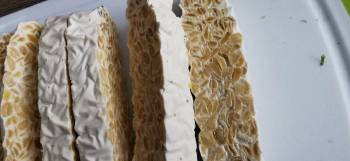
During this period, I started consuming more videos on YouTube centred on landscape photography. I watched photographers like Thomas Heaton and Adam Karnacz as they roamed the UK looking for beautiful scenes to capture, the kind we see in shops and offices, of seascapes and flowers, fields of lavender or moors covered in heather. Many photographers from the UK and abroad use YouTube to get their work out to audiences of would-be landscape photographers like myself.
Although these content creators are primarily professionals, and each video had intent concerning the specific hook or headline of the film, it was evident to me that they were also artists. Not only were they entirely absorbed in making images, but they would also often just stop and take it all in, paying reverence to the aesthetic of the scenes, marvelling at the majestic vistas or the magnificence of an old oak tree. They had, in those moments, what I was seeking: peace.
I decided this was something I needed to do.
The Pandemic affected us all
A Walk in the park produced probably my first attempt at a piece with intention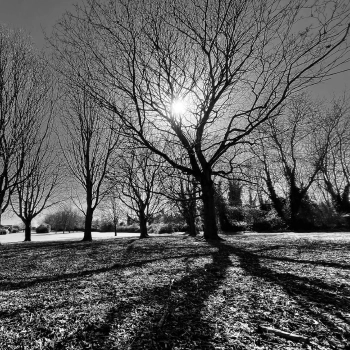
According to the World Health Organisation (WHO), the global pandemic triggered a 25% increase in anxiety and depression1 worldwide. In a survey conducted by the mental health organisation Mind, one in four (26%) adults and over one in six (18%) young people experienced mental distress for the first time during the pandemic 2. The challenges of isolation, loneliness, inability to socialise with friends and family, and the inability to care for our families, especially our elderly, weighed heavy on our collective consciousness.
All these things affected our wellbeing, and for some of us, it’s been challenging to row back and achieve a sound state of mind.
Looking back now, we are still feeling the effects three years on. Access to services aimed at helping us cope is something we should all try to obtain. Still, there are things that we can do for ourselves to lessen these feelings of anxiety and depression.
My escape into landscape photography was one such route for me.
Walking, Observing, Capturing
The sage’s mind in stillness is the mirror of Heaven and earth,
the glass of ten thousand things - Chuang-tzu
I have long been a people photographer. I have a Master’s degree in visual sociology from the prestigious Goldsmiths (UoL), where my work was highly rated. I’ve had work exhibited a few times. Back in the day, I even worked as a commercial portrait and wedding photographer for a short time.
My aspirations to be a full-time artist had waned, primarily due to my need for security and wanting to avoid risking the comfortable life afforded me by working as a software developer.
However, in the two years preceding the pandemic, I had dusted off my camera and began to make work again. My love for the medium was re-ignited. It was exciting to imagine what I could do with the images I created.
I began walking for exercise because we were limited in social interactions due to the lockdown. I used my phone camera to make images of the landscapes around me. As time passed and restrictions relaxed, I ventured to the coast to work in the early morning peace. I honed my practice to the point where I began to produce images worthy of exhibition and, thus, sales.
Anchored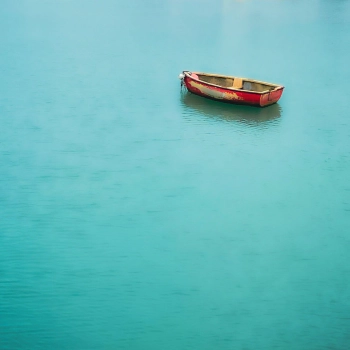
Mindfulness, Stress Reduction and Peace
Our personal growth can fuel our photography, our photography can fuel our personal growth. - Brooks Jensen
I’m fortunate to live in an area with picturesque landscapes within walking distance of my home. In addition, there are woodlands, lakes and the coast within an hour’s drive from home. Living in an urban setting can be just as stimulating regarding creativity and landscapes. We can all find landscapes in our local environment. Urban landscapes are just as exciting and can be as beautiful, with sculpted gardens, rivers running through the middle of our cities, ornate bridges and brightly coloured lights.
Urban Landscapes - Greenwich overlooking the Maritime Museum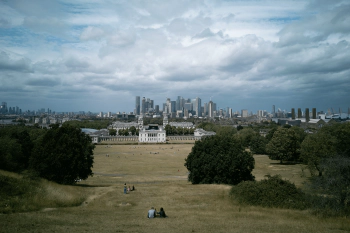
In addition, revisiting a place on different days, in other conditions and at alternate times can produce an entirely different look.
I had a penchant for early mornings as it meant fewer people were around, and the air was quiet from lack of cars or traffic. That didn’t stop me from visiting some of my favourite spots when people were around, though. People in landscapes can help in compositions, giving perspective, especially with large vistas. When using a long shutter speed, it’s also possible to effectively phase them out of the frame completely.
The positive effects of this practice were immense. I felt able to be around people again. I found new things to talk about. Showing my work to people brought affirmations and praise for the images I had created, which made me feel once more that I had skills and talent that I could share with the world.
Be Prepared
Being out with gear can be cumbersome, but preparing for the terrain you’re visiting means you’re already winning.
Some things that I find useful:
- Map your route: This is important, especially if you go solo into a forest or remote area.
- Have an ‘offline’ version of your map/route: It’s good to have the map on paper or saved as an image on your phone. In remote areas phone signal can disappear. You want to be independent of a map’s ability to load in real-time.
- Send someone that route: Send a friend or family member the details of the location and the route you’re taking.
- Check-in and give expected timings: This is useful if you’re on your own and going into a remote or isolated spot.
- Check out: When you’re done, let people know you’re back safe and sound
- Have a first-aid kit
- Have rainproof covers, ponchos and boots
- If hiking, wear hiking boots
- If on the beach, again, waterproofs and maybe some Wellington boots or similar waterproof footwear
- Spare batteries and charging cables: If the shoot/hike is for many hours, this will help you stay in touch
Pacifico (peaceful in Spanish)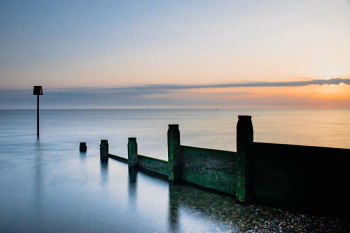
Landscape photography helped improve my mental health by giving me an outlet that brought stability to my thoughts. It meant I could think about situations and scenes centred on the beauty of this world.
As lockdown ended and the world returned to a semblance of its former self (the new normal), I’ve not lost the desire to photograph my local landscape and spend time from spring to autumn venturing to unfamiliar destinations and revisiting old ones like Whitstable or the atmospheric Kings Wood to do new work. Ever improving the skills I learned during that time of turmoil.
On days when I feel stressed, I go for a hike in the woods. Even if I don’t take my proper camera, lenses and tripod, I’ve always got my phone and spend at least a portion of the time thinking about the land that surrounds me, stop for a minute and compose a memory of that place.

